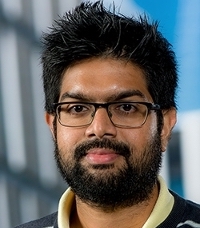Hunting for the first stars I: Attempts to demystify He II with MUSE [slides]
David Caro building, Level 7 conference room
More information
-
 Dr Themiya Nanayakkara, Postdoc
Dr Themiya Nanayakkara, Postdoc
Leiden Observatory
Email: nanayakkara[at]strw.leidenuniv.nl
Abstract
In the quest for identifying pop-III stars, the most sought-after emission line is He II, however, stellar population models are unable to accurately predict the He II features while being consistent with other emission line diagnostics. To produce He II ionizing photons, stellar populations require sources of hard ionizing radiation with energies >= 54.4 eV and sources such as AGN, shocks, X-Ray binaries, stellar rotation and/or binary stellar evolution, and post-AGB stars have been suggested as possible contributors. To accurately identify relative contributions from these wide variety of sources, high signal-to-noise spectra with rest-frame UV/optical coverage and advanced stellar population/photoionization models are required.
The VLT/MUSE GTO program has obtained deep ≈10-30h exposures of the Hubble legacy fields yielding rest-UV spectra of galaxies at z≈2-6. In this talk I will present recent results of the MUSE program, where we compare the z=2-4 He II emitters with expectations from photoionization modelling to explore their stellar population and ISM conditions. I will compare our results with recent results from local samples of high-redshift 'analogues' to show the different parameter spaces probed by local and high-redshift galaxies in the rest-UV. I will address the necessity to obtain high signal-to-noise spectra of individual galaxies to model rest UV emission and absorption systems along with auxiliary rest-NIR lines to constrain stellar population properties of galaxies at high-z, which will be aided by combined studies by MUSE and JWST in future.